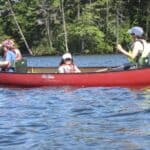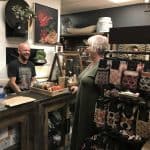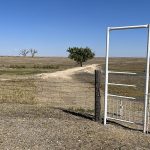
How can elected officials and board members be more open to new ideas and more effective? Photo by City of Bryan, Texas.
By Paula Jensen
Having a passion for rural community development and leadership is what drives my personal and professional life. My personal vision statement reads, “I will be a clear voice for rural people and places by mobilizing and empowering rural changemakers to build vibrant communities.” It has taken me a number of years, a lot of support, much personal and professional growth, and many mistakes to realize that vision.
A turning point for me as an emerging rural community leader was in 1999 at the age of 32 years old when I was sworn in as the first woman to ever serve on the city council in my hometown’s 113 year history.
Serving as a Trustee and Mayor of my community allowed me to organically develop leadership and management skills. I was empowered by the knowledge and understanding I was gaining. As a learner, I sought innovative ways to accomplish things in our community by engaging residents and seeking new resources which often created challenges with my fellow trustees, yet they permitted me to try and supported our successes as the community was developing and growing.
I am grateful for those five years of opportunity in city government because they built my foundation as an emerging leader. I was given new opportunities that allowed me to graduate from Leadership Plenty, co-found a regional economic development organization, start a community daycare, co-create a community foundation, and craft a new career for myself as a grant writer and community & economic development professional in the nonprofit sector.
Engaged, diverse, and collaborative leadership are essential components of vibrant communities, they are also the missing link in many of our small rural communities. In order to keep those small communities vital and advance the future of rural, there must be a focus on building our local leadership capacity.
Statistics show that the prospect to serve as a rural leader in South Dakota, where I live, is 1:27, as compared to 1:57 in our urban centers. However, the current scenario of rural leadership can be described by this familiar story: Someone has a great idea for engaging in a community project, but no one wants to take the lead toward accomplishment and success. Too often all they get out of these great ideas are a few working group meetings and many frustrated residents that profess, “Nothing ever gets done!” When this destructive cycle is set into motion, it is difficult to get people involved and excited about the future of their communities or rural places as a whole.
The need for new rural leaders to rise up is great. According to the Center for Small Towns, South Dakota needs 357 new leaders every year. When we identify good leaders in a community they are priceless, and often depleted to the point of burnout. Therefore, we must have continuing support, tools and resources available to the existing leaders while simultaneously developing emerging leaders.
Another important next step toward developing emerging leaders in our rural communities is to cultivate a leadership philosophy centered on community building and shared leadership for two major reasons: 1) the growing complexity of problems in rural communities does not lead to easy solutions. One leader cannot filter all the information available to address problems, therefore, they need to rely on the experience of other community leaders; and 2) a growing number of people in communities are no longer content to behave as followers, but want to share in the responsibilities and decisions.
We must all believe that each of our rural communities have unique flair, history and culture, economic opportunity, neighbors who care, a great quality of life, leaders that believe in strategic thinking, ideation and innovation, stimulating conversation, engaged residents, strong asset base, and understanding that leadership development begins at home. #Iamrural
Learn more about how local officials can be effective shared leaders and how the community can support them in our current video Idea Friendly Officials and Boards.











Paula, You hit so much of this like a nail on the head. “Engaged, diverse, and collaborative leadership are essential components of vibrant communities, they are also the missing link in many of our small rural communities.” A flip side of this too which you touch on are the leaders and the doer. Ideas are a dime a dozen, we need the doers and the followers to help get it done and it seems that’s a lost art or there is burnout. The need for new leaders is 357 a year? Then we need to get busy igniting a match amongst our communities members to get that leadership fire burning. Again thanks for a great article. Joan